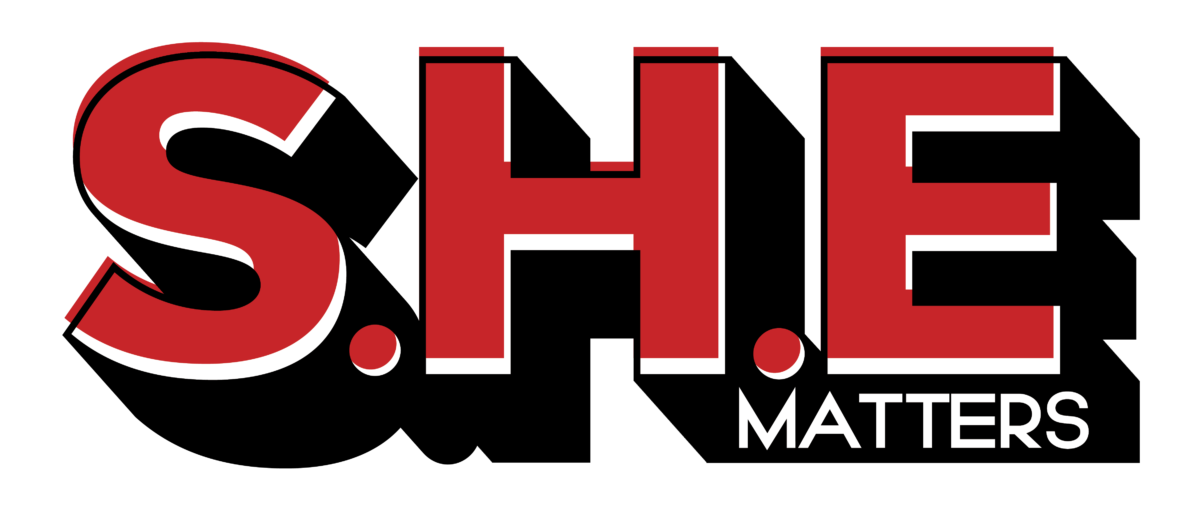
(S.H.E. Matters) Can You Cause Change By Coining a Term?: Exploring the “Girl Boss” Phenomenon
The push for women’s equality in the workplace cannot only be tackled using one frame of mind.
After all, the challenge in and of itself is multifaceted, meaning it will take a variety of methods and steps in order to achieve change that is both lasting and comprehensive. And while we believe the first step, of course, is to pay female employees equally, other approaches may also be taken into consideration.
For example, some individuals or businesses wield language as their weapon in the world, either to bring attention to certain aspects of the problem or to ultimately change the perception of others.
So, when it comes to women’s workplace equality, how exactly does the familiar term “girl boss” fit into the bigger picture? Does it have the ability to move the needle?… And should it at all?
Girl Bossing Our Way Through History
Widely known as a controversial hashtag and (potential) expression of female empowerment, the term “girl boss” got its start in 2014 by Nasty Gal founder Sophia Amorusa. Specifically, it was popularized when she published her bestselling autobiography, “#Girlboss.”
“A Girl Boss is someone who has big dreams and is willing to work hard for them,” Amorusa explained in a 2014 interview with Elle. “So being a Girl Boss is really about being the boss of your own life. You don’t have to be the boss of anyone else to be a Girl Boss.”
That being said, the term has, in fact, been widely applied to instances wherein a female entrepreneur or managerial figure was involved. Thus, the corporate phenomenon only grew.
Of course, the concept of female empowerment and equality within the workplace is hardly new. Though this particular term for the sentiment was finally coined within the last decade, its roots actually go back much further.
“Girlbossery feels recent, but is an 80s idea re-marketed for the 2010s,” as broken down in an article written for Vice. “[The girl boss] came about when the long tail of baby boomer women picking up the labour slack from men at war meant that women were entering the workforce in greater numbers, balancing careerism with co-parenting.”
Consequently, some women have wholeheartedly embraced the title of “girl boss,” drawing both inspiration and strength from a term that encapsulates the intersection of their identity and their career.
Is This Goodbye, Girl Boss?
While the idea of the “girl boss” was lauded for a few years following the rise of Sophia Amorusa, it largely proved fleeting. Now considered “infantalizing” and “sexist,” the broader conversation around the term is largely one of condemnation.
In fact, the term is even ingrained in internet meme culture. “Gaslight, gatekeep, girlboss,” for example, is a popularized play on “live, laugh, love” that also points out the perceived toxicity behind the girl boss concept.
“Have you ever heard a male worker referred to as a #boyboss?” Refinery29 asks. “No. That’s because men’s power in the workplace is still the default. It’s the status quo and anything a woman does is still an exception, an anomaly.”
The rise of “girl boss” branding has led to the generation of new, similarly functioning terms: think “She-E-O” or “boss bitch.” But that’s not where the arguably cringe-worthy marketing antics stop.
One example? A poster ad designed in 2019 by PeoplePerHour, a company whose mission is to connect freelancers with clients.
“You do the girl boss thing,” the poster proclaimed, complete with the portrait of a smiling woman, “we’ll do the SEO thing.”
Unsurprisingly, the Advertising Standards Authority (ASA) in the United Kingdom received and upheld numerous complaints regarding the poster, which they said “[reinforced] harmful gender stereotypes” and thus broke their codes and rulings.
As a result, PeoplePerHour issued an apology and edited the ad to remove the word “girl.” According to the ASA, PeoplePerHour admitted that the ad could “could come across as patronising and reductive.”
Can You Guess What We Think of Girl Boss?
Whether or not the term “girl boss” is productive, positive, or even necessary is up for debate and will change from one person to another.
That’s why we decided to turn inward for a moment. Specifically, we wanted to know: What do the women of Mad Men Marketing themselves think of the term?
Nicole S., Social Media Manager:
“Girl Boss, what a term. It surely isn’t my favorite. I personally think it’s a little cringy. Not only have influencers run it into the ground, but why can’t we just use ‘boss’? If someone just simply described another woman as a ‘boss,’ I feel that is much more powerful.”
Gina, Executive Vice President and Director of Traffic:
“I honestly hate the term, I feel like if I’m a boss then I’m a boss, you know? The term boss doesn’t automatically have to be male. Why do people have to put a gender on everything?”
Tamara, Director of Production:
“I’ve always strongly disliked the term ‘Girl Boss’ along with other unnecessarily gendered terms like ‘Male Nurse’ or ‘Female Pilot.’ It implies that those job titles are inherently reserved for one sex, and while I recognize that historically those roles have been filled by one or the other, I don’t believe we should give power to that segregation through the use of gendered labels.
There is something particularly grating about the term ‘Girl Boss’ though; it feels very infantilizing in a way that says ‘Aw, it’s so cute that you’re a girl and a boss at the same time, good for you.’ I know that there are women who like to own this label though, and more power to them, but I do not personally identify with those women. I’ve never considered myself to be particularly feminine or even masculine for that matter. Either way, I don’t want anyone (especially men) to call me a Girl-Anything; I am a boss who just happens to be a woman. That’s it.”
Nicole F. Executive Assistant:
“I don’t like to term something as ‘Girl Boss’ just because I think it sounds immature. If we want to make strides in owning something, I feel it’s important not to come off as ‘cutesy,’ which is what that term represents to me. Whenever I hear that I think of, like, a little girl learning to ride her bike and being coined ‘girl boss.’ I want to be a BOSS, not a girl boss. We’re women and we’re bosses and we OWN it.”
Kandi, Vibe Curator:
“The term girlboss feels closed-minded to me. Reflection leads to me to believe I feel this way because I don’t think gender assignments should exist, nor are they formative to me. I don’t particularly care for gender labels like boy, girl, and the like. Even as the mother to three humans the medical system labeled as male, I do not call myself a ‘boy mom.’ Quantifying the label ‘boss’ with gender goes against my core beliefs about not having gender assigned on paper, to people, nor to products or bathrooms.”
Sam, Copy Chief
“I have no interest in being called a ‘girl boss.’ To me, it ultimately lands flat because it feels like it’s a gratuitous nod to feminism with no real substance behind it. Just calling someone a ‘girl boss’ doesn’t move the needle forward — especially when the term is also used in a demeaning way. I’d rather do away with it altogether.”
But what about you? What do you, as a woman in the workforce, think of the term “girl boss”?
We’d love to hear from you.
Please reach out to us or visit our S.H.E. Matters page to send in a submission for our review, and stay tuned here for more information!

Workplace Inequality 101: An Introduction to S.H.E. Matters
As Mad Men Marketing launches a new initiative aimed at empowering the voices of women across all industries — Support Her Equality (S.H.E.) Matters — we wanted to stop to break down the basics of workplace inequality.
Namely, in the below blog we explore the wage gap, intersectionality, and more.
After all, without first identifying and acknowledging the existing obstacles to women in the workforce, we’ll never be able to truly overcome them.
The Basics of Wage Inequality
The matter of wage inequality has been both acknowledged and debated for decades, but the needle has remained relatively slow to move. Thankfully, it has not stopped moving altogether.
“In 2020, women who were full-time wage and salary workers had median usual weekly earnings that were 82 percent of those of male full-time wage and salary workers,” the U.S. Bureau of Labor Statistics reported in 2021. “In 1979, the first year for which comparable earnings data are available, women’s earnings were 62 percent of men’s.”
Based on the aforementioned information, we can begin to see how, over time, the wage gap has begun to close. That being said, workplace equality cannot be deemed “achieved” until that gap no longer exists.
Moreover, the wage gap between men and women is varied — and further exacerbated — by a woman’s racial identity, meaning we need to take an intersectional approach in studying and remediating this nuanced obstacle.
The Matter of Intersectionality
“There has never been a time in this country when there has not been a wage gap that exists along intersecting gender and racial lines,” the Center of American Progress affirmed in an article exploring the depths of the wage gap with regard to women of color.
For example, the following breakdown of women’s earnings according to their identified ethnicity has been calculated by the American Association of University Women (AAUW):
Women’s Earnings as a Percentage of White Men’s Earnings, by Race/Ethnicity
- White alone, not Hispanic or Latino — 79%
- Black or African American — 63%
- American Indian and Alaska Native — 60%
- Asian — 87%
- Native Hawaiian and Other Pacific Islander — 63%
- Hispanic or Latino origin — 55%
With these numbers broken down so plainly, it’s easy to see how workplace inequality is not merely a matter of gender. Consequently, even if the wage gap were to eventually close between white women and men, there is no guarantee that women of color would be able to catch up at the same time.
The Introduction of the Broken Rung
You’ve heard of the glass ceiling, but have you heard of the broken rung?
Simply put, the broken rung theory applies to the specific phenomenon wherein women are less likely to obtain promotions that lead them up the leadership ladder in their workplace(s).
What’s more? It starts at the very bottom and continually narrows as it goes up, making a woman’s first few years in an entry-level position critical.
“Women continue to face a broken rung at the first step up to manager: for every 100 men promoted to manager, only 86 women are promoted,” as reported in McKinsey & Company’s Women in the Workplace report for 2021. “As a result, men outnumber women significantly at the manager level, which means that there are far fewer women to promote to higher levels.”
With all this being said, we have to acknowledge that this is by no means a comprehensive review of the facts, figures, and realities of workplace inequality.
We have not yet addressed motherhood, for example, as a driving force behind these disparities, among other variables. However, we do hope to slowly and systematically take a look at these matters, in addition to the personal stories of leading women in our communities.
So, do you have a story you’d like to share with S.H.E. Matters?
Is there a resource or organization you believe deserves more attention?
Or do you know an incredible woman who has more than earned the spotlight on her accomplishments?
We’d love to hear from you.
Please reach out to us or visit our S.H.E. Matters page to send in a submission for our review, and stay tuned here for more information!


